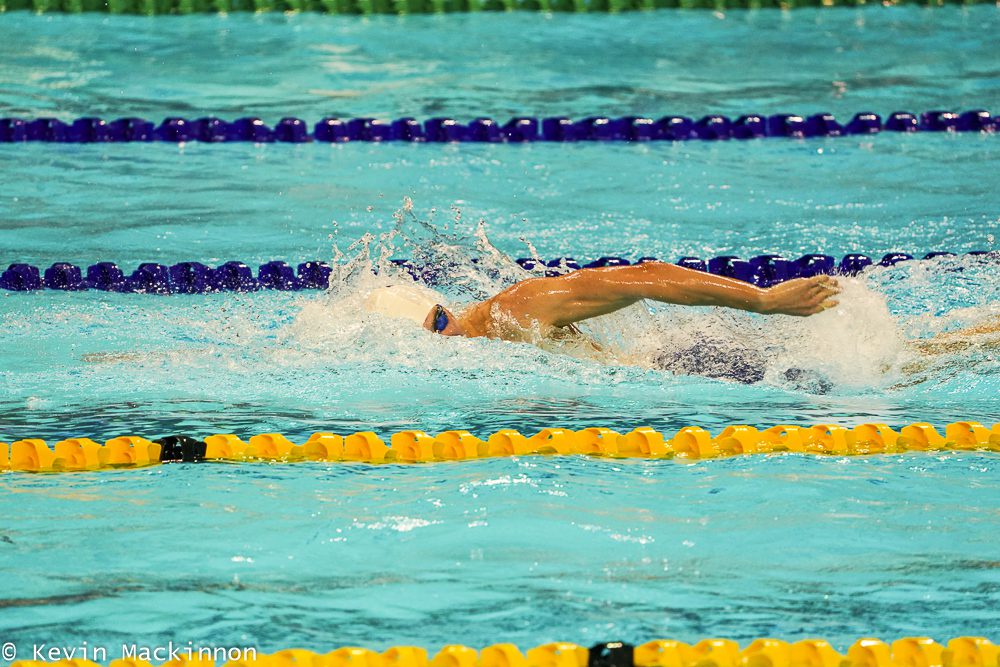The key to improving your swim skills? Immerse yourself with frequent sessions
Swimming is a foreign language - immerse yourself in its grammar
 Photo by:
Kevin Mackinnon
Photo by:
Kevin Mackinnon
A few months ago, an athlete I was coaching said to me “I feel that swimming is a foreign language that I should have learned when I was kid.” I was immediately struck by this analogy.
We learn our mother tongue naturally, bit by bit, and typically know it so well by the time that we are adults that we don’t even think about how to use it, nor about the rules that govern it. Interrupt a typical person in the middle of a conversation (myself included) and they won’t be able to tell you the name of the tense they are using in, nor what the different parts of a complex sentence are called or the rules that govern their use.
We all learn walking, running and other land-based activities in a similar way – as our “mother tongue” of movement. Despite the fact that walking on two feet is so complicated that humans have only recently been able to program robots to do it (watch the first robot 5 km here), walking is an automatic action requiring no thought for most adults. Changing direction, speeding up or slowing down and looking around as we move are also easily accomplished.
When we move to the water for the first time it is like being thrown into a foreign country – where we definitely don’t speak the language. We are horizontal instead of vertical, balance around our center of buoyancy, not our center of gravity, can only breathe at certain times and must actively separate inspiration and expiration. We push water off the tops of our feet in a whiplike manner, not by driving our feet down like pistons into the ground. We don’t even usually look where we are going. Learning how to do all this is like learning a new language that switches the order of verbs and nouns, uses an entirely new alphabet and even requires you to listen for and create sounds that you didn’t know existed.
Related: Tips for returning to the pool
When learning a new language, many effective instruction programs overcome these challenges by relying on intense immersion. Many hours per day, many days in a row, in as many forms as possible (listening, writing, speaking and reading) with as little exposure to and use of the old language as possible. After several weeks of immersion like this a whole new level of fluency is often achieved. Once achieved, this fluency can be maintained with much less effort.
When working on our swimming we can take a page from this approach by getting in the pool as often as possible. Five 20 to 30-minute sessions per week is much better for learning swim skills than the two 60 to 90-minute sessions that most triathletes get, even if you end up spending less overall time in the pool. Keep this high-frequency approach up for a month or two and you will see big improvements. Another option for getting immersive time in the pool is signing up for swim training camps, where you might be in the pool for several hours each day over the period of 7-10 days. The real benefit of these camps is not fitness development, but the numerous opportunities to practice your swim skills. Either of these approaches can be a great way to jump-start a period of more intense focus on swimming, or to help you get back your swim-fluency after a period away from the water.
So, take the plunge and immerse yourself in the world of swimming grammar (and bad puns). The effort you spend building your fluency in the water will pay off with more confidence, less wasted energy and faster times on race day.
Thanks to Juanita for the inspiration for this piece.
Darian Silk is a triathlon coach and Clinical Exercise Physiologist based in Toronto. Read more about Darian here or email him at darian@teamatomica.com. You can also check out his TrainingPeaks profile here.

